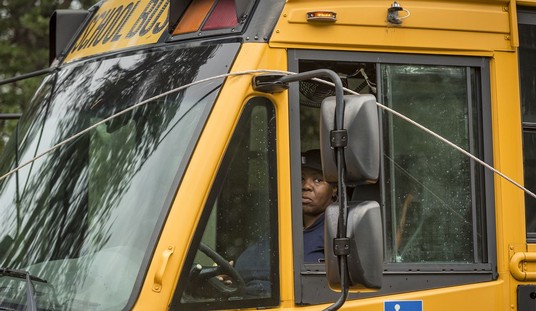Easter is no holiday for rabbits. They are too often purchased at pet stores as an impulse gift for kids wanting a real-live Easter Bunny, says the House Rabbit Society, a national rescue and education organization based in California that urges people not to buy rabbits on a whim.
“We dread Easter every year,” says Mary Cotter of Rabbit Rescue & Rehab, the New York area chapter of the House Rabbit Society, which urges Easter celebrants to “Make Mine Chocolate” — i.e., buy a chocolate bunny for the Easter basket instead of a live rabbit. “People don’t realize that this is not an impulse purchase — these creatures can live seven to 10 years,” Cotter says. Sadly, many “Easter Bunnies” don’t last even half that long.
“After Easter, the rabbit becomes full-grown, which happens in about six months,” Cotter says. “By then, the kids have stopped taking care of the rabbit, so it dies. Or the parents just let the animal loose outside, thinking it’s ‘going back to nature.’ But domesticated rabbits are not capable of taking care of themselves outdoors — that’s equivalent to taking a Bulldog out to the Serengeti and saying, ‘Run with the wolves, my little one.'”
What’s more, caring for a rabbit is beyond the ability of most children. Rabbits are quite fragile medically, and can swiftly go from appearing fine one moment to being dead the next (especially if, for instance, they eat something that disagrees with their extremely sensitive and complicated digestive systems). Not all veterinarians are trained to care for rabbits; they require the medical attention of an exotic-animal doctor, and such vets are not always easy to locate in the event of an emergency.
They’re not good pets for kids, but rabbits can make ideal pets for grown-ups with day jobs and small apartments. “Rabbits are crepuscular animals: active in the early morning and early evening, and asleep during the day,” Cotter says. “So their natural schedule tends to coincide with that of a normal working person.” Plus, rabbits can easily be trained to use a litter box.
In an interesting trend, the House Rabbit Society reports that several of its happy adopters enjoy including pet rabbits in the Passover celebration. With Passover this week, it’s encouraging to note that several unwanted, erstwhile “Easter Bunnies” have undergone a religious conversion; call them the Passover Bunnies.
The Jewish holy day and festival commemorating the Hebrews’ escape from enslavement in Egypt is an especially appropriate time to share with pet rabbits, says Debbie Wolfe of New York City, who shares her home with two beloved bunnies, Angel and Nickels, both adopted from Rabbit Rescue and Rehab (and both neutered). Wolfe plans to celebrate, as she does each year, by acknowledging her pets as family members — right alongside her husband, children, dog, and cat.
So how do bunnies fit into Pesach? “They’re a natural fit,” Wolfe explains. “The popular conception is that bunnies are cute to look at but that they don’t have much personality. In fact, they have incredible personalities, and the more you spend time with them and interact with them, the more their personalities come out.”
“Passover is the celebration of the Jewish people’s release from slavery,” Wolfe adds, “and in many ways rabbits have been enslaved, or encaged, by that ‘dumb bunny’ misconception.”
Angel and Nickels had both suffered abandonment, but lived to find a happy new home. As survivors, the pet pair are made to feel right at home at Passover. “Typically at the Seder, parsley is one of the symbolic foods — and parsley happens to be one of my rabbits’ favorite snacks!” Wolfe explains. “They eat bunches of it.” But she draws the line at sharing Matzoh. “It’s really not good for rabbits,” Wolfe explains. “They’re vegan herbivores, with very sensitive stomachs.”
Wolfe also has finger puppets that represent the ten plagues described in the Haggadah. She originally purchased these puppets as gifts for her young niece and nephew, and when they outgrew them, she started using them to play with Angel and Nickels at holiday time.
“When we adopt animals, it’s important to give them the things they like, the foods and toys that are good for them, but it also behooves us to introduce some of our traditions to them as well, as long as we do it safely,” says Wolfe, who recently gave birth to twins and looks forward to many Seder celebrations with her two- and four-legged kids.
And so, the animal that became synonymous with the Christian holiday of Easter can now help kids have fun learning about Judaism too, and in the process, drive home the non-denominational lesson of having compassion for all living things. As Wolfe says, “The rabbits will be a nice way of explaining our religious culture and traditions to our children.”
Notice that the word rabbit is rabbi with a T — and this is significant, Wolfe explains. “Rabbis are the teachers of the Jewish community, and I think rabbits have a lot to teach us about community, survival, and relationships.” Social creatures, rabbits don’t thrive by themselves, and prefer to live in bonded pairs. “Rabbits remind us that our interactions with other beings form the tapestry of life,” Wolfe concludes. “Sure, we can do the survival thing alone, but our relationships — with other people and with animals — are what make people live instead of just survive.”









Join the conversation as a VIP Member